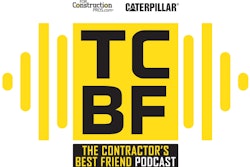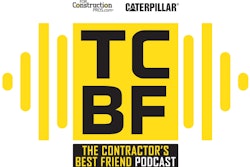
Rarely do I write “time period” articles related to what is happening at a single point in history. My written works have normally been more timeless while addressing leadership, executing field planning strategies and the like. But with recent events over the past few years, my engagement with contractors around the world has led me to address some of the more current issues.
No doubt the impact made from COVID-19 is global and it was, and is, devastating. This epidemic also “carpet bombed” leadership, production, safety, quality, etc., like we have never seen before in our industry, leaving some incredibly negative consequences in its wake. Between supply-chain inconsistencies, ongoing government overreach and financial concerns filling much of senior leader’s discussions, it is important that we strengthen our focus as owners and leaders moving ahead.
Financially, contractors must take an honest look at their cash situation. “Cash is king,” as the saying goes, may be more appropriate today than in the past. As interest rates are again moving northward, it is critical that contractors take a second, third and even fourth look at their cash situation, being careful to take borrowed money that will have greater rates than we have seen in many years.
Purchasing equipment may require more evaluation than in prior years. Contractors love their equipment and, like a proud collector of antique cars, it’s easy for many contractors to build a fleet of equipment. It is good for one’s pride to look out over one’s yard and enjoy the line-up of trucks, trailers, and needed pieces of equipment, clean and shining cats, deer, and such.
Leasing equipment may need to be more the norm for contractors, and for more than only financial reasons. At the rate of updates now being provided on equipment, it may make more sense to lease such equipment where software upgrades are most likely covered as part of one’s lease arrangement.
Material costs have sky-rocketed in many parts of the United States and the outlook doesn’t immediately look better, although any significant return to fossil fuel development would provide some relief. But again, at this time it doesn’t look promising. So, what’s a contractor to do? Keep a few things in mind, including:
- Don’t be shy about bringing increased material costs to the attention of your customers. They don’t like it either, but most are more understanding as they too pay more at the pump and grocery store.
- Conduct a potential volume need and negotiate with your material supplier. They may not be able to help as much as in past times but stay at it. Material plants are still a bit more loyal to those who have stuck with them.
- Tighten up your estimating procedures to ascertain that you are bidding more exact what the material use will be. This will require a more accountable documenting on material use on projects. I still see contractors throwing a few extra yards of materials, tons of asphalt, etc. into a bid “just in case.”
Tool purchases have always been a lost leader for contractors between tool breakage, loss, and theft. Most contractors admit they know that they have always had tools break, lost or stolen, but it was just part of the industry. There is some truth to that, but contractors may want to rethink their tool use, storage and security. This isn’t about badgering workers when they break a broom handle or lose a screwdriver, but it is about building more accountability about maintaining and retaining tools. This is a “nickel and dime” cost compared to equipment and worker costs, but this component is still adding up to 2% - 5%, and more for some contractors. This is a needless cost that we can improve.
Employee costs continue to be as much or more rise than ever. With new employee loyalty at perhaps one of the lowest points in many years, contractors are working harder than ever to find the right worker and retain that same worker. I’ve written and spoke on this topic for years, but we are just having more challenges in our industry than we have ever faced. Couple of thoughts for the next few years:
- Start preparing better when recruiting and interviewing. We’re still seeing way too much hiring just because we’re very short on the bench. Be careful about giving in to this. It often creates more problems.
- Pay competitive wages, but more importantly, start training on Day One.
- Start paying retention bonuses, to the new worker, foreman and your crew. It’s the foreman or crew that often run off a new worker. Give them an incentive to work with, develop, and retain the new worker.
- Personally make more trips to follow-up and speak to new workers. My research has shown that the top three reasons why new workers quit early, many after just 30-40 days is because:
You must be more active and visible in the new worker’s start with you. Create a regular training program for workers that includes tool handling, required work processes, material knowledge and how to be a better team player, improve safety, etc. We are hiring workers who do not know the difference between a Phillips head screwdriver and a wrench. Educate, educate, educate!
If any of the recent developments in our industry are an indication of what we are about to see in the next few years, it would be wise to go back and navigate through each of the items spelled out in this article. No one has a crystal ball, but you would almost have to be blind and deaf to read the tea leaves. Things look extremely challenging moving forward. Tread sure-footed by being honest and quick to address future indicators that might reflect bumps and hurdles ahead. The successful contractor has always taken an inventory of his approach and then preparing his or her company to take on the future challenges, head on.
Being prepared for the worst may help you achieve the best!












![Lee Boy Facility 2025 17 Use[16]](https://img.forconstructionpros.com/mindful/acbm/workspaces/default/uploads/2025/09/leeboy-facility-2025-17-use16.AbONDzEzbV.jpg?ar=16%3A9&auto=format%2Ccompress&fit=crop&h=135&q=70&w=240)








